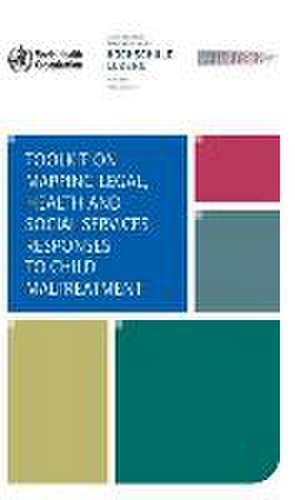Toolkit on Mapping Legal, Health, and Social Services Responses to Child Maltreatment
Autor Health Organization World, World Health Organizationen Limba Engleză Paperback – 16 dec 2015
Preț: 242.69 lei
Preț vechi: 255.45 lei
-5% Nou
Puncte Express: 364
Preț estimativ în valută:
46.44€ • 50.65$ • 39.16£
46.44€ • 50.65$ • 39.16£
Carte indisponibilă temporar
Doresc să fiu notificat când acest titlu va fi disponibil:
Se trimite...
Preluare comenzi: 021 569.72.76
Specificații
ISBN-13: 9789241549073
ISBN-10: 9241549076
Pagini: 87
Dimensiuni: 213 x 302 x 8 mm
Greutate: 0.39 kg
Editura: World Health Organization
ISBN-10: 9241549076
Pagini: 87
Dimensiuni: 213 x 302 x 8 mm
Greutate: 0.39 kg
Editura: World Health Organization
Notă biografică
World Health Organization is a Specialized Agency of the United Nations, charged to act as the world's directing and coordinating authority on questions of human health. It is responsible for providing leadership on global health matters, shaping the health research agenda, setting norms and standards, articulating evidence-based policy options, providing technical support to countries, and monitoring and assessing health trends.
